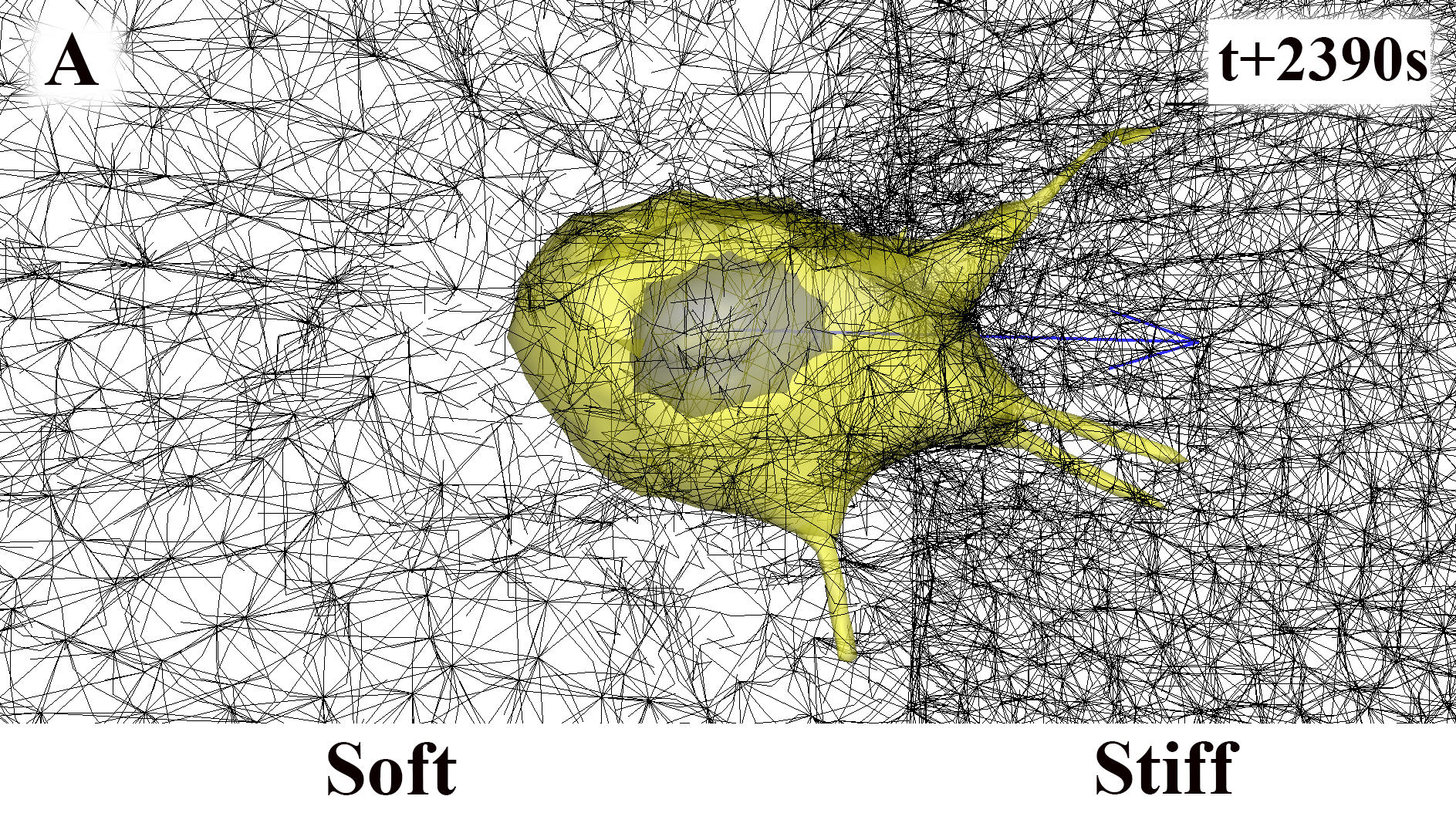Significance
We have investigated how the directed cell migration toward stiffer extracellular matrix (ECM) is guided by filopodial mechanosensing of the surrounding ECM stiffness. As filopodia bind to the surrounding 3D ECM fibers, local force and displacement are created near the filopodium tip in response to the contraction of filopodia. We have looked into the time rate of changes to the force and the relative displacement between each binding site of ECM fiber (or fluorescent microbeads) and that of the filopodium tip. To quantify the local ECM stiffness sensed by the cell, we have aggregated these effects using two approaches of continuum and discrete mechanics and formulated two different equations for the effective rigidities of local ECM perceived by the cell.
Abstract
Filopodia have a key role in sensing both chemical and mechanical cues in surrounding extracellular matrix (ECM). However, quantitative understanding is still missing in the filopodial mechanosensing of local ECM stiffness, resulting from dynamic interactions between filopodia and the surrounding 3D ECM fibers. Here we present a method for characterizing the stiffness of ECM that is sensed by filopodia based on the theory of elasticity and discrete ECM fiber. We have applied this method to a filopodial mechanosensing model for predicting directed cell migration toward stiffer ECM. This model provides us with a distribution of force and displacement as well as their time rate of changes near the tip of a filopodium when it is bound to the surrounding ECM fibers. Aggregating these effects in each local region of 3D ECM, we express the local ECM stiffness sensed by the cell and explain polarity in the cellular durotaxis mechanism.
- filopodia, mechanosensing, ECM, durotaxis, computational modeling
This simulation shows a #cancer cell migrating from a soft location in the extracellular matrix to a stiff location. The video uses a new tool to understand the mechanics of metastasis described in a @PNASNews study https://t.co/5hDJWvdfoL pic.twitter.com/gRFexofJFD
— MIT MechE (@MITMechE) January 3, 2018
Reference
- Kim, M.-C., Silberberg Y.R., Abeyaratne, R., Kamm, R.D., and Asada, H.H. “Computational modeling of three-dimensional ECM-rigidity sensing to guide directed cell migration,” Proceedings of the National Academy of Sciences, vol. 115(3), E390-E399, January 2018.
